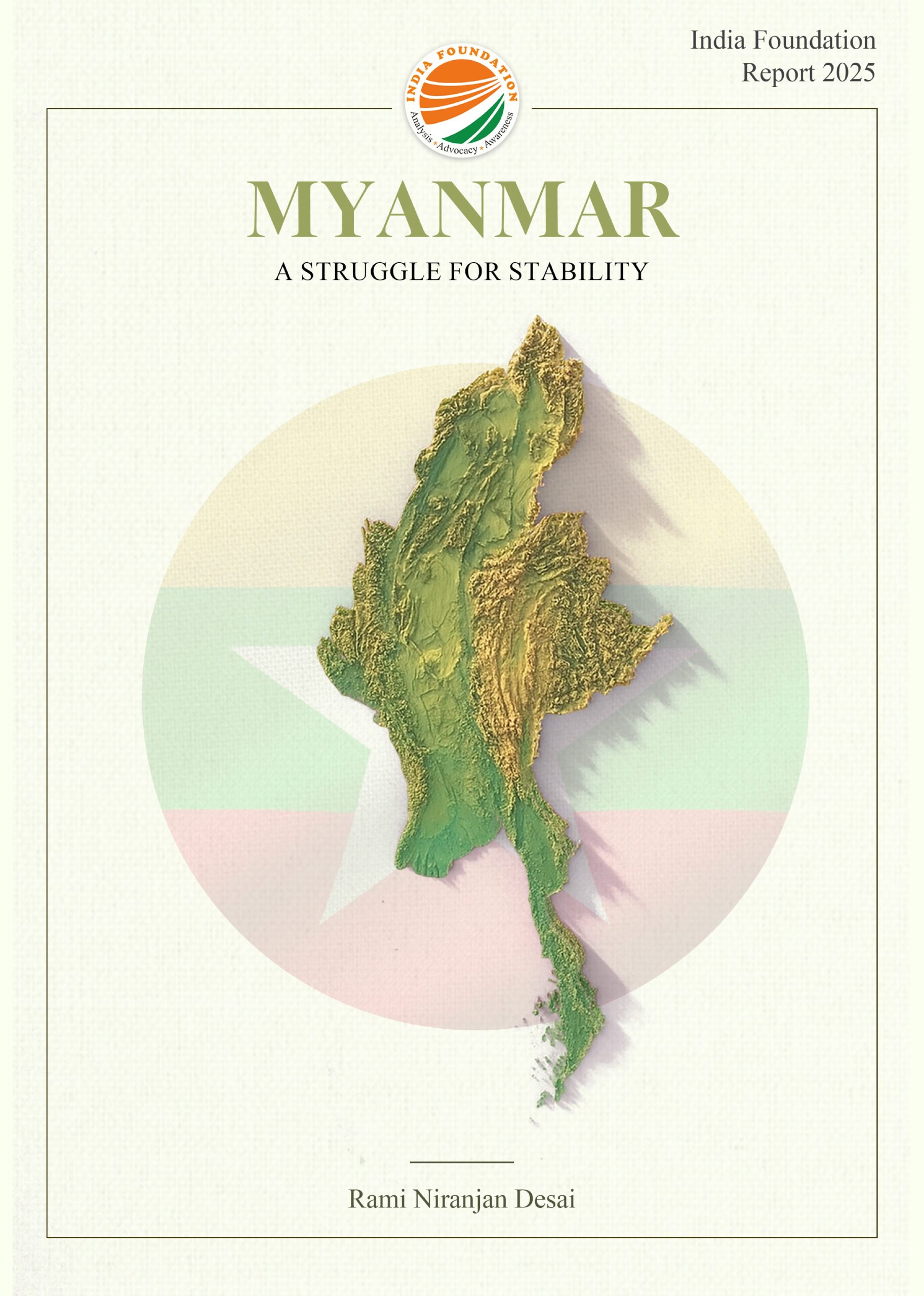On February 1, the Hon’ble Finance Minister Srimati Nirmala Sitharaman, presented her FY 2024 Budget to Parliament. The Hon’ble Prime Minister termed this the Amrit Kaal Budget—the budget for a golden age for India. It proved to be so. Unlike most other budgets, which are almost always criticised on multiple counts, this budget has been hailed by all stakeholders. The people of India appreciated the continued support for key welfare programs and infrastructure investment. Taxpayers loved the judicious tax cuts. Businesspeople expressed their happiness for policies supporting green growth and robust job creation. The capital markets praised the stability and continuity in policymaking. And economists were gratified to see that all the key macroeconomic parameters ranging from growth to the fiscal deficit to open market borrowings were deftly managed.
The Amrit Kaal budget was prepared under daunting circumstances. The last three years have drastically disrupted the world. The global economy has suffered from high inflationary pressures and interest rates, low investments and, more recently, a wave of layoffs in technology-based companies. Through the economic slowdown of the last three years, India has emerged as the shining star of the global economy. According to a United Nations study[1], growth prospects in the developed world have taken a sharp downturn – with the United States and the European Union growing by a low 0.4% and 0.1% in 2023, respectively. On the other hand, India is expected to grow at close to 6% in 2023, while the average growth rate in South Asia is projected to remain at 4.4%.
From being a Fragile Five country in 2013-14, India is now among the Top Five economies in the world! The Indian government’s strong and stable fiscal policies have allowed the country’s economy to not only emerge relatively unscathed from the pandemic, but also aid the developing world. To put the Union Budget of 2023-24 in context, it is important to understand how the major events of the past three years have impacted the world economy.
- Covid-19 Pandemic: Following the once-in-a-century pandemic, the World Bank projected the growth of the developing world, much like Covid-19 vaccine accessibility, to be quite uneven. As a result, Low-Income Countries (LICs) have fallen into extreme poverty due to rising food and energy insecurity. As per the Bank’s projections[2], LICs with extreme poverty over 50% will rise to a positive figure by 2024, as opposed to the pre-pandemic expectation of poverty reduction. The strict, yet poorly managed, lockdowns in China have also impacted supply chains and global trade even as the world starts to recover from the pandemic.
- Russia-Ukraine War: The conflict has had significant spill over effects on both the South Asian and global economy due to disrupted supply chains and increased food and energy prices. The impact was further magnified due to increased energy requirements, owing to climate change and disrupted energy supply following the war. As median inflation[3] reached a new high of 9% in the second half of 2022, central banks around the world tightened monetary policy, reducing inflation but temporarily slowing down growth as well.
- Climate Change and Natural Disasters: Even as the world was reeling from the post-Covid impact on local, regional, and global economies, it was further shaken up by grave climate change-induced disasters in the form of hurricanes, cyclones and floods. The ‘State of the Global Climate 2021’[4], published by the World Meteorological Organization, reported loss and damages worth USD 100 billion in 2021. In 2022, the floods in neighbouring Pakistan devastated the country’s economy[5] – with total damages at USD 15 billion, total economic losses at USD 15.2 billion, and the cost of rehabilitation and reconstruction at USD 16.3 billion, Over 33 million people were affected and almost 9 million were pushed below the poverty line. India also witnessed more frequent extreme weather events, as storms and flooding alone cost the country over USD 7.5 billion in 2021. Once the loss and damage from weather events in agriculture and other sectors are quantified, the figure will be much larger.
This year’s budget is historic for two major reasons: first, it seeks to lay the foundation for the next 25 years to ensure continuity and stability in development decisions and, second, it divides policy priorities into seven interdependent, yet holistic ‘saptarishis’ (seven sages). Together, they make the budget people- and development-friendly. They are:
- Inclusive Development:
Equal benefit to all sections of society through investments in agriculture and farmers’ welfare, as well as medical infrastructure.
- Agriculture (BE 2023-24 = Rs 1,25,036 crore or a 5% increase over last FY RE): The proposed additions under the Budget will cater to the entire agricultural supply chain. Enhanced agriculture credit to the tune of Rs 20 lakh crore for animal husbandry, dairy, and fisheries aims to improve the quality and care of farm resources. The proposed Digital Public Infrastructure will revolutionise agricultural practices in India by providing open-source access to solutions, inputs, credit, and insurance to farmers. Decentralised storage capacity for farmers will help them realise competitive prices, and additional cooperative dairy and fishery societies will further organise the sector and bring in more formal agricultural employment. Finally, in line with the Atma Nirbhar Bharat vision of the Hon’ble Prime Minister, the Agriculture Accelerator Fund will reach young entrepreneurs in rural areas and give them an opportunity to innovate and revolutionise agricultural practices.
- Health (BE 2023-24 = Rs 89,155 crore or a 12% increase over last FY RE): Post the Covid-19 pandemic, the focus of the health sector has shifted to infrastructure development. The Budget speech announced the establishment of 157 new nursing colleges, introducing multidisciplinary courses at medical colleges on technology, allowing private players to access the Indian Council for Medical Research (ICMR) facilities, and pushing R&D in the pharmaceutical sector. In addition, health infrastructure via the old and new All India Institute for Medical Sciences (AIIMS) has received an increased outlay, and additional expenditure under Ayushman Bharat shall further the mission of achieving universal healthcare.
- Reaching the Last Mile:
To ensure inclusivity of tribal groups, the Budget lays special emphasis on schemes for their benefit, specifically through the new Pradhan Mantri PVTG (particularly vulnerable tribal groups) Development Mission, and by increasing the number of teachers in the Eklavya Residential Model Schools for tribal children in remote areas. Education has received a significant boost this year of 8.3% as compared to last year.
- Unleashing the Potential:
Micro, Small and Medium Enterprises (MSMEs) form a core part of the Indian economy. India has over 63 million MSMEs, contributing 30% to its GDP, 40% to its manufacturing output, and 48% to its exports. One of the biggest challenges of the sector has been the provision of safe credit opportunities. The Standing Committee on Finance[6], in our ‘Strengthening Credit Flows to the MSME Sector’, had noted that more than 60% of the MSMEs currently avail credit from informal sources, depending on costly and unreliable credit. The Budget provides additional support to MSMEs through the infusion of Rs 9000 crore under the revamped Credit Guarantee Scheme. This will potentially lower the cost of capital and allow MSMEs to avail collateral-free credit guarantee of Rs 2 lakh crore. Access to reliable credit will significantly boost their output, accelerate formalisation, and increase creditworthiness.
Additionally, the Standing Committee also recommended bringing MSMEs into the digital ecosystem both for credit access and formalisation, especially given India’s UPI success story. The Government further establishes an enterprise DigiLocker for MSMEs, other businesses and trusts as a one-stop solution for foundational identification and digital safe-keeping of documents.
- Youth Power:
With a strong belief in the power of the youth and their ability to take our nation forward through the Amrit Kaal, the Budget aims to enhance the layout for skilling. The PM Kaushal Vikas Yojana 4.0 (PMKVY 4.0) will focus on technical skills like robotics, artificial intelligence, and coding to provide a stimulus to India’s already booming start-up industry. Previous editions of PMKVY have provided over 10 million certifications, out of which a quarter have materialised into meaningful employment. The increased outlay for school and higher education, coupled with the National Education Policy, will provide an impetus to infrastructure-oriented, multidisciplinary, and skill-based education. The power of India’s youth will be unleashed by providing them with high-quality modern education with a special focus on skill development and entrepreneurship.
- Green Growth:
The Hon’ble Prime Minister’s commitment to net zero by 2070 at COP26 laid the foundation for India’s green growth. With the announcement of the target, India also committed to utilising renewable power for 50% of its energy requirements, reaching 500 GW of non-fossil energy capacity by 2030, reducing the total projected carbon emissions by one billion tonnes by 2030, and reducing the carbon intensity of the economy by 45% by 2030. The announcement came at a crucial juncture for the world, as the United Nations Environment Programme[7] projects a 2.8 degrees Celsius rise in temperature by the end of the century, as opposed to the target of capping it at 2.0 degrees Celsius by 2100. It is estimated that by 2070, over 75% of greenhouse gas (GHG) emissions will come from countries from the Global South (developing countries).
India is one of the few Global South countries that has declared a net zero target for itself. The 2023-24 Budget takes this vision forward with Rs 35,000 crore allocated for capital investments into the green transition and net zero. Additionally, support shall be provided to set up battery storage systems with a capacity of 4000 MWh. The Green Credit Programme, along with the additional outlay to the National Green Hydrogen Mission, will provide further momentum to the green transition in India. The Government is also planning to introduce an Emissions Trading System unique to India, based on buying and selling of credits earned from reducing emissions intensity, as opposed to absolute emissions reductions.
At COP26, the Hon. Prime Minister announced a requirement of $1 trillion from developed countries for climate finance.[8] India’s Budget proves that it is on track to achieve its Nationally Determined Contribution (NDCs) and achieve net zero, which shall also require mobilisation of finance from the developed world, in line with the principle of common but differentiated responsibilities (CBDR).
- Infrastructure Investment:
The last nine years have been extremely positive for India’s infrastructure story. For example, the Government doubled the number of airports to 146, added close to 43,000 kilometres to the national highways, and tripled the capital expenditure on higher education institutions like AIIMS and IITs. The budget streamlines the investment pipeline for the country across sectors. Firstly, it simplifies the administrative structure for investments. It creates an Infrastructure Finance Secretariat for more private investment in public-dominated sectors like urban infrastructure, power, and others. It creates a ‘Harmonised Master List of Infrastructure’, with recommendations from experts on classification and financing requirements for the Amrit Kaal.
Secondly, the Budget lays great emphasis on city and urban planning through the ‘Sustainable Cities of Tomorrow’ mission, focusing on resource efficiency and enhanced availability and affordability. It creates the foundation for significant investment opportunities in urban infrastructure through the introduction of municipal bonds. Urban investments also get a renewed push through the Urban Infrastructure Development Fund worth Rs 10,000 crores.
Lastly, regional connectivity, railways, and logistics have been given a boost via enhanced allocation of Rs 2.4 lakh crore to the railways.
- Financial Sector:
To reduce the cost of compliance, regulators shall be expected to review regulations through public and private consultation. Further, in order to enhance the governance of public sector banks, the Government shall propose amendments to the Banking Regulation Act, the Reserve Bank of India Act, and the Banking Companies Act. Additionally, the focus will be on setting up better digital infrastructure for payment security by using PAN as the common identifier on platforms and providing subsidies to banks on UPI payments.
Conclusion
In summary, the Amrit Kaal Budget is a visionary, well-balanced budget as it provides fresh stimulus through two key measures. Firstly, enhanced capital expenditure (capex) to boost employment, help crowd in private investments, and improve operational efficiency. This year, capex has been increased to Rs 10 lakh crore (3.3% of GDP), and effective capital expenditure, inclusive of grants-in-aid to states, to Rs 13.7 lakh crore (4.5% of GDP). Secondly, a significant middle-class tax cut to put money in the hands of consumers, generate demand, as well as increase spending and consumption. Together, both sources of stimuli will stabilise macroeconomic parameters, increase growth rate to 6-7%, and make India a shining star in the global economy by driving digitisation and decarbonisation.
Author Brief Bio: Jayant Sinha is the Chairman of the Standing Committee on Finance in Parliament and a Lok Sabha MP from Hazaribagh, Jharkhand. Views are personal.
Reference:
[1] https://www.un.org/development/desa/dpad/publication/world-economic-situation-and-prospects-february-2023-briefing-no-169/#:~:text=Average%20GDP%20growth%20is%20projected,weigh%20on%20investment%20and%20exports.
[2]https://openknowledge.worldbank.org/bitstream/handle/10986/38030/GEP-January-2023.pdf?sequence=34&isAllowed=ypage 25
[3]https://openknowledge.worldbank.org/bitstream/handle/10986/38030/GEP-January-2023.pdf?sequence=34&isAllowed=ypage 11
[4]https://library.wmo.int/doc_num.php?explnum_id=11178
[5]https://www.worldbank.org/en/news/press-release/2022/10/28/pakistan-flood-damages-and-economic-losses-over-usd-30-billion-and-reconstruction-needs-over-usd-16-billion-new-assessme
[6] https://eparlib.nic.in/bitstream/123456789/994373/1/17_Finance_46.pdf
[7] https://www.unep.org/resources/emissions-gap-report-2022
[8] https://pib.gov.in/PressReleasePage.aspx?PRID=1768712




